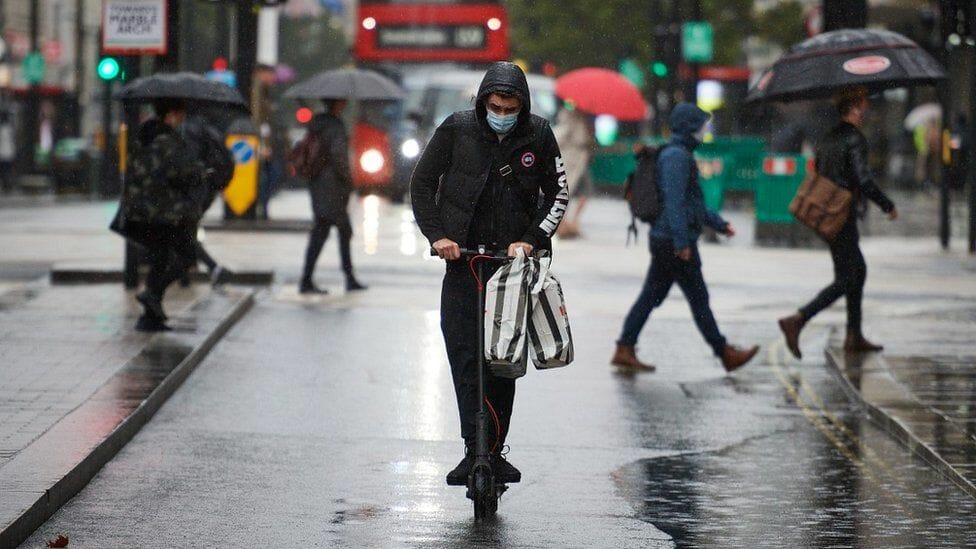
A frequently asked question: Can you ride an electric scooters in the rain?
The simple answer is yes. At present, some scooters with IPX4 can be used in light rain, which means you need to confirm the waterproof level (IP rate) of your scooter before you ride.
The other problem that needs your attention is that the risk of riding in wet condition will no doubt increase, so we do not recommend riders to ride in rainy days. However, we have no way to control the weather. Sometimes we do need to travel in the rain. Today we will introduce 8 riding safety tips for riding an off road electric scooter in the rain.
Are Electric Scooters Waterproof? Can You Ride an Electric Scooters in the Rain?
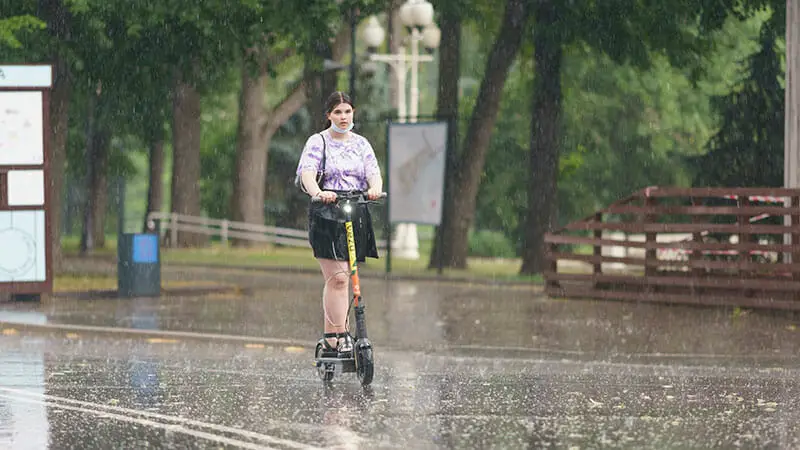
Electric scooters are not 100% waterproof, but they can definitely hold up in light rain or mist. However, if you plan on riding your electric scooter in wet weather conditions that are more severe, we recommend using a water-resistant cover.
If you do get caught in the rain while riding your electric scooter, make sure to take extra care when braking and turning. Wet roads can be extremely slippery, so it’s important to slow down and proceed with caution!
And don’t forget – always wear a helmet when riding an electric scooter, no matter what the weather is like!
What Is IP rating?
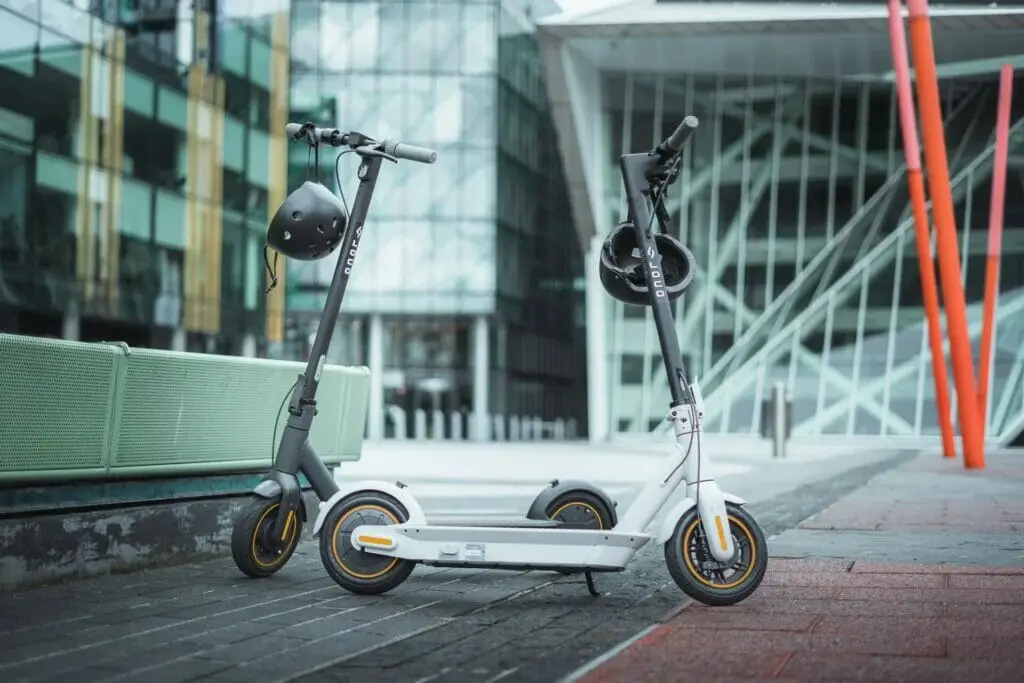
The IP rating of electric scooters completely depends on the model of scooter, but over 50% of e-scooters on the market have no IP rating at all, meaning you definitely wouldn’t ride them in the rain.
IP, or Ingress Protection rating, is a scale used to rate the level of waterproofing an electronic device has. The IP rating for electric scooters can range from IPx0 (no protection at all) to IPx68 (protected against close-range high pressure jets of water).
Most electric scooters have an IP rating of either IPx54 or IPx56. This means that they are protected against dust and light rain, but not heavy rain or submersion in water.
If you plan on riding your electric scooter in wet weather conditions, we recommend looking for one with a higher IP rating. This will ensure that your scooter is better protected against the elements!
Is it Safe to Ride Electric Scooters in the Rain?
It is not entirely safe to ride your electric scooter in the rain. Even with a waterproof electric scooter, the right gear, and excellent riding skills don’t make it safe to ride in the rain or wet conditions. Roads can be slippery and your vision can be impaired.
Waterproof vs. Water-Resistant
One of the most common misconceptions is that waterproof and water-resistant are the same thing. It is the opposite. Depending on the IP rating, each electric scooter has different levels of resistance to water.
Being waterproof means a product can withstand getting submerged in water without sustaining any damage. While being water-resistant means it can only withstand a specific level of contact with water.
What happens when you ride an electric scooter in the rain?
Different electric scooters will act differently in the rain, and their behavior is largely dependent on the quality of your electric scooter. Electric scooters that have low IP ratings or no IP ratings should be stored away if it’s wet outside as they have little to no protection from water damage.
An electric scooter doesn’t have a complex internal combustion engine, so it can deal with water much better than a traditional scooter. That said, you should still be careful about the level of exposure to water when riding an electric scooter in the rain. Most electric scooters are not completely waterproof and submerging them underwater may cause damage to their electrical components.
That said, most electric scooters are designed to cope with a little bit of water. If it’s just a light rain or mist, you should be fine riding your electric scooter as normal. Just make sure that you take extra care when travelling over wet surfaces and avoid any large puddles if possible.
If the weather is particularly bad and there’s a risk of your electric scooter becoming submerged in water, it might be best to err on the side of caution and leave it at home. Riding an electric scooter in the rain can be fun, but only if you stay safe!
Another thing to take into consideration is how well your e-scooter is able to perform in wet conditions. When you drive a car you intuitively change your driving style to suit the conditions. For example, you drive differently in the dark or when the road is wet, so the same thing should apply when you ride an electric scooter.
Make sure you ride to suit the changing weather conditions. When the conditions are wet and slippery, it’s safer to ride at a slower speed, take corners gently, and look out for any potholes or bumps in the road. If you do plan to ride your e-scooter in the rain, make sure you’re also wearing appropriate clothing to keep yourself dry.
When should I avoid riding electric scooter in the rain?

Low visibility
One of the main dangers of riding an electric scooter in the rain is low visibility. When it’s wet outside, visibility can be reduced significantly, making it difficult to see other road users and potential hazards. If you can avoid riding your electric scooter during periods of bad weather, we recommend doing so.
Riding an electric scooter in low visibility conditions puts both you and other road users at risk. It’s important to take into account that other drivers may not be able to see you as easily when it’s raining, so always ride with caution.
If you do have to travel in wet weather, make sure that you increase your following distance from other vehicles and wear bright clothing or using additional lighting to make yourself more visible.
If you’re riding an electric scooter at night, it’s also a good idea to wear reflective clothing in addition to bright lights. This will help other road users see you and avoid any potential collisions.
Never rely solely on your front and back light during times of low visibility and always stay safe!
Heavy rain
If it’s raining heavily, you might want to consider leaving your electric scooter at home and taking public transport or walking instead. Heavy rain can make surfaces very slippery, which increases the risk of accidents occurring.
Even if you are a confident rider, we advise avoiding riding an electric scooter in heavy rain. The combination of wet weather and slick surfaces can be very dangerous, so it’s always better to play it safe.
Take care when travelling on footpaths and roads during times of bad weather – always walk where possible and only travel if conditions are safe.
Freezing rain and snow
Freezing rain is a type of precipitation that falls as liquid droplets but freezes into ice on contact with the ground or another surface. It may also be called glaze or sleet, depending on where you live in the world. Freezing rain is an important winter weather hazard for many countries worldwide, including Canada, Russia and northern parts of Europe and China. The most dangerous aspect of freezing rain is how it coats everything outside with a layer of ice, making driving conditions extremely hazardous because vehicles lose traction when they hit even very thin layers of ice on roads or pavements/sidewalks (pedestrians can slip over too).
Tips on How to Ride Your Electric scooter in Rain
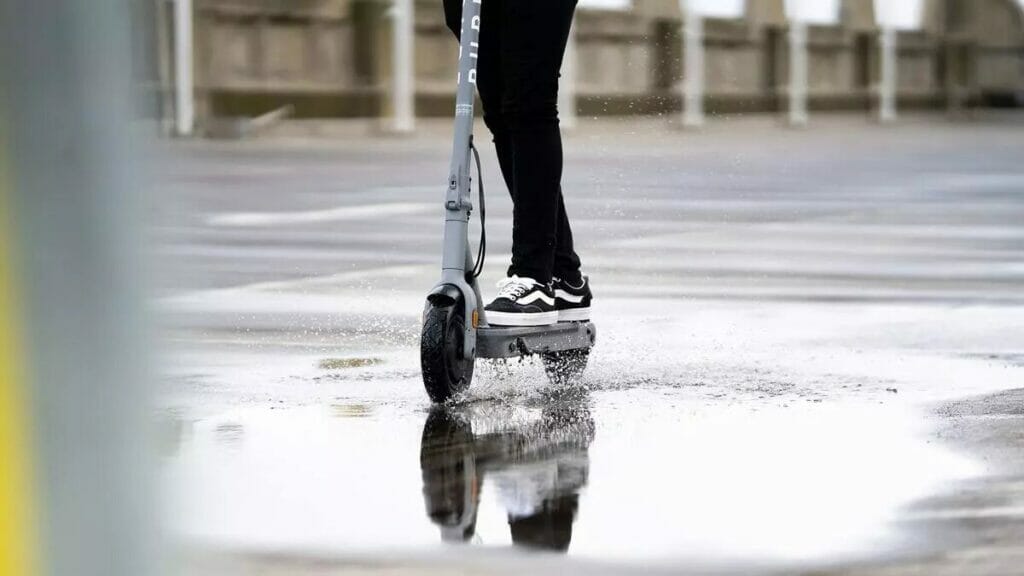
Buy Fenders for Your Electric Scooter
Fenders are the perfect accessory for your electric scooter because they keep water away from you and off of other parts of the bike. You should be able to find a set that fits your model on Amazon or any online marketplace; just remember not every e-scooter will have fenders available as an option (we recommend buying them if it’s possible).
There are many different styles of fender but here’s some tips: Make sure there is a steady attachment point where they can mount securely without moving around while riding, check how much clearance exists between wheels/tires when mounted correctly before purchasing – don’t buy too short ones!
Make sure that you’re getting quality materials which won’t rust under the influence of rain water or salt build-up from road grime (aluminum, stainless steel).
A set should include at least one front and rear fender for each wheel as well as any necessary attachments/mounts needed – but keep in mind that some e-scooters are designed without rear shock absorbers so these might not be an option on those models; you’ll have to check compatibility before ordering anything online!
Make yourself visible to drivers
One of the most important things to remember when riding in wet weather is to make yourself as visible as possible to other road users, especially drivers. In general, wearing bright colors will help you stand out – but there are a few specific tips that we recommend for rainy days:
- Make sure your clothing is light-colored or reflective so that headlights can bounce off of it and show up better;
- Add reflective stickers/tape to clothing, helmet, bags etc.
- If using a backpack (or any other bag), ensure it has a rain cover which will keep everything inside dry;
- Use front and rear lights even during the day time as visibility is reduced in wet weather.
Correct the tire pressure
Another thing you should do as part of your pre-ride checks is to adjust the tire pressure according to the manufacturer’s recommendations. This will ensure that you have the best possible grip on the road, especially in wet conditions when adhesion is already reduced. A quick way of checking whether or not your tires are over-inflated (or under-inflated) is by seeing how deep a footprint they make in water – if it’s more than halfway up the tread, then they’re likely inflated too much and need reducing; conversely, if there’s hardly any mark at all then they might be insufficiently inflated and should be pumped up a bit more.
Lower your Speed
You should always ride at a safe speed, but this is especially true in wet weather. Make sure that you’re always riding within the posted limits and don’t go any faster than necessary for conditions on the ground (or road).
If there are puddles ahead of you then slow down before going over them – even if they look shallow enough to be fine; it’s better to err on the side of caution when it comes to riding an electric scooter because there could be hidden hazards lurking underneath such as pot holes or debris which might cause damage if not noticed early enough. You don’t want something like this happening during your commute!
What should I do if my electric scooter gets wet?
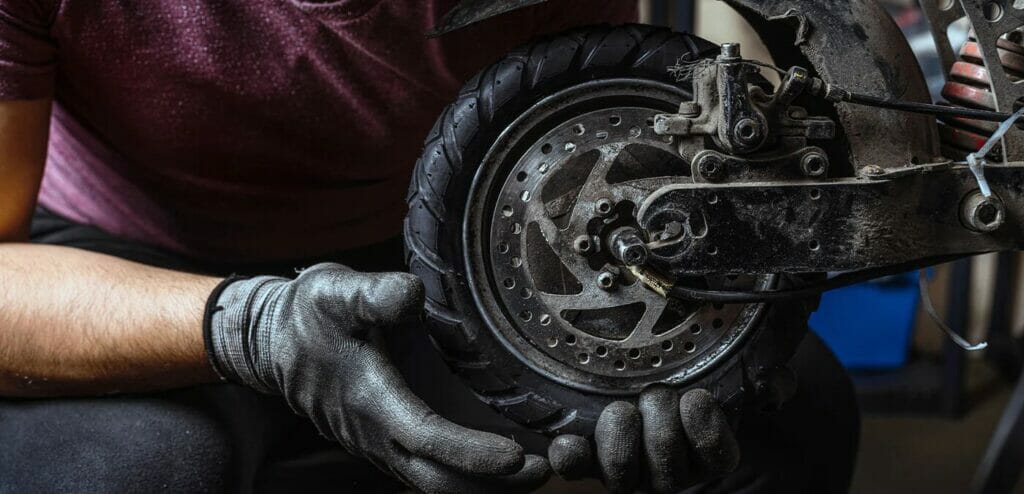
Cover it up
If you can’t avoid getting your electric scooter wet then the best thing to do is try and dry it off as soon as possible. This means removing any water that’s pooled in the battery compartment, under the deck and around electrical components. If there’s a lot of moisture present then you might want to consider using a vacuum cleaner or hair dryer (on low settings) to help speed up the process – but take care not to damage anything in the meantime.
Once everything is completely dry, apply a coat of waterproof sealant or spray wax to all metal surfaces (this will help stop them from corroding).
Maintenance
It’s important to check your electric scooter for corrosion as this can drain your battery power and shorten its lifespan. To do this you’ll need some tools and basic DIY skills. You want to check for corrosion on wires, corrosion in the battery case, and corrosion on batteries.
If you don’t have access to a workshop, then you’ll need to take your bike to a repair shop or a professional who knows a lot about electric scooters.
In general, you should always keep up with maintenance on your electric scooter so that it stays in good condition for as long possible. Wet weather can lead to rusting if left untreated – but there are some simple things which will help prevent this from happening:
- Regularly clean off any dirt and grime using a damp cloth or sponge;
- Use WD-40 twice per month (once before winter storage) to lubricate moving parts such as wheels/bearings etc.;
- Wash down wet surfaces after each ride; store indoors during heavy rain periods when not riding
What Happens If Your Scooter Hasn’t A Proper IP Rating?
Different electric scooter models act quite differently in the rain.
What largely determines their behavior is the quality of your scooter and the IP ratings. Scooters that come with low IP ratings or no IP ratings at all have little or no protection from water. That’s why they should be stored away if it’s raining outside.
While the IP ratings of your e-scooter depend on its specific model, over 50% of electric scooters out there come with no IP rating at all.
It means you surely can’t ride them when it’s wet outside. However, make sure you don’t leave your scooter outside for too long if it’s raining. This can damage your vehicle even if it comes with a high IP rating. Leaving it outside for a few minutes is totally alright. Just make sure to dry it out later.
Also, various electric scooter manufacturers tell users to either be extra cautious or not to ride in wet weather at all due to more difficult conditions.
While a few raindrops will not be a trouble to most e-scooters, heavy rain can damage the intricate electrical systems.
In the worst case, it can disable the vehicle. You are surely aware of the fact that electronics and water can’t work together.
Interior Effects
Scooters with improper IP ratings can undergo several interior problems that you can’t identify at first. That’s why need to be extra careful.
The battery of your vehicle is the first component you want to protect when taking your scooter for a ride in the rain. It cannot sustain damage when water seeps in.
Even the ones with good IP ratings and strong water resistance can get damaged in the long run.
Exterior Effects
Water can also damage the exterior of your vehicle and its overall finish.
An excess of water will lead to corrosion on the frame and disc brakes. Even the lights can get moisture seeped in. In worst cases, you may witness permanent damage to the e-scooter.
If your scooter doesn’t have a good IP rating, you must find a shelter when it starts to rain in the middle of the ride. Make sure the scooter’s sensitive parts don’t come in contact with water.
How To Make Scooter More Resistant To Water?
You can take a few measures to make your electric scooter more water-resistant.
The first is to protect the connectors by applying some dielectric grease. That will isolate the connectors of the scooter from air and humidity. It also provides protection against oxidation.
You can employ some liquid tape to isolate different components except the scooter’s LED indicators. It’s great to use battery bags after spraying them with good waterproofing spray and potting components.
Use Electric Scooter Lights and Reflectors
One of the most harmful effects of rain is its ability to restrict visibility. Since visibility is reduced on rainy days, it is important to make sure that other people around you (especially the driver) can easily see you. The best way is to add scooter lights and reflectors to your electric scooter. If you have to travel at night on a rainy day, it is necessary to be equipped with the above equipment.
Lower Tire Pressure
You need to check the tire pressure before you travel. The higher the tire’s air pressure, the less the part of the tire that touches the ground, and the grip will weaken. On the slippery ground, properly reduce the tire pressure within a suitable range (according to the tire pressure range), increase the contact area between the tire and the ground to better grip the road, which makes the riding more stability. Be careful not to fall below the minimum air pressure standard of the tire!
Brake Early
The above 5 tips are what you should prepare for the ride in the rain. It’s time to discuss the most 2 important tips while riding. The first is to remember to brake early. Braking early allows you to slow down gradually, thereby maintaining traction throughout the process. Sudden braking on a wet surface road will cause skidding and may lose control of the scooter.
Slow Down
Riding an electric scooter in the rain follows many of the same safety tips as driving in the rain. One main rule is that when riding on wet roads, you should ride slower than usual. This is the same reason as early braking. Besides, the road is wet and slippery on rainy days, and the visual field is affected. Keeping a low riding speed makes you better control the electric scooter and react faster.
Clean Your Electric Scooter After You Ride
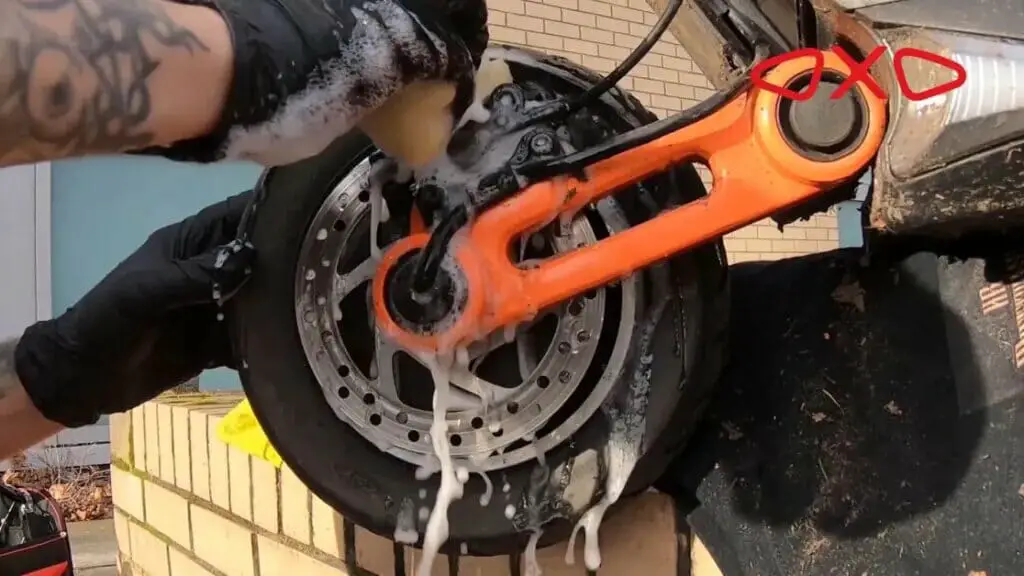
Another important tip for riding an electric scooter in the rain is to make sure to spend time cleaning the electric scooter after ride. This includes cleaning it, but also ensuring that it is fully dried to prevent rain from causing any long-term damage to the scooter, such as rust and short circuits. After riding on a slippery road, taking time to clean and dry it can greatly increase its service life.
Q: Do electric scooters work in the rain?
A: Yes, you can ride electric scooters in the light rain because most are somewhat water-resistant and splash-resistant but not completely waterproof. If you ride the scooter through extreme conditions or submerge it, then the scooter will be rendered inoperable. It will not electrocute you, but it will stop operating.
Q: Will riding my e-scooter in rain affect it?
A: Being electrical devices, e-scooters can be damaged by exposure to water — we all know, water and electronics do not mix! If you find yourself caught in heavy rain, or see that heavy rain, hail, or snow has been forecasted, you should not ride your scooter.
Q: Are scooters OK in the rain?
A: The simple answer is yes. Most scooters can ride freely in light rain, but riding in heavy rain will cause problems such as electrical system damage on the scooters, which will greatly affect future use.
Q: How waterproof are electric scooters?
A: Are all electric scooters waterproof? This is the big question, and in the vast majority of cases, the answer is no. In fact, even if an e-scooter is claimed to be waterproof (or water resistant), many manufacturers will still advise riders to avoid using their products in the rain.
Q: Are most electric scooters waterproof?
A: With the increased demand for water-resistant electric scooters, nearly all scooters in the market today are resistant to light splashes (IPx4 rating). Several others can also withstand light rain or occasional puddles (IPX5), while several high-end scooters can sustain deep puddles or heavy rain, i.e. IPX6 or higher.
Q: Are electric scooters safe?
A: Electric scooters are safe to ride, if you know what to check before riding to avoid an accident (and wear a helmet). It also helps if you’re familiar with riding before jumping on a shared scooter, which is the focus of most accident-related studies.
Q: How do I protect my scooter from rain?
A: Buy a Water-Resistant Cover
Waterproof covers are relatively inexpensive, and you can use them to cover your scooter if you leave them outside. We advise you not to do this if possible because any electrical equipment is best in a safe and dry place.
Q: Which scooter is best in the rain?
A: With an electronic-ABS rear brake and a front drum brake, you can brake effortlessly in the wettest weather conditions, and the average stopping distance is 3 metres. The scooter also delivers an IPX5 rating, meaning it offers good protection in wet conditions.
Q: What is the maximum speed limit for electric scooters?
A: 15.5mph
They must not go over the speed limit of 15.5mph (some areas may be limited to a lower maximum speed limit) They must have motor insurance (this should be covered by the hire scheme rather than the individual rider) They must only ride on roads and cycle lanes, not motorways or pavements.
Q: How long can an electric scooter last?
A: On average, e-scooters in a ride-share fleet last for 9 to 18 months, while personal ones last for up to 3 years. The efficiency of a personal e-scooter reduces after the first 2 years, but with proper care and maintenance, you’ll still be cruising your scooter for up to 3 years or even more.
Related Articles
Best Electric Scooter Rain Covers in 2023

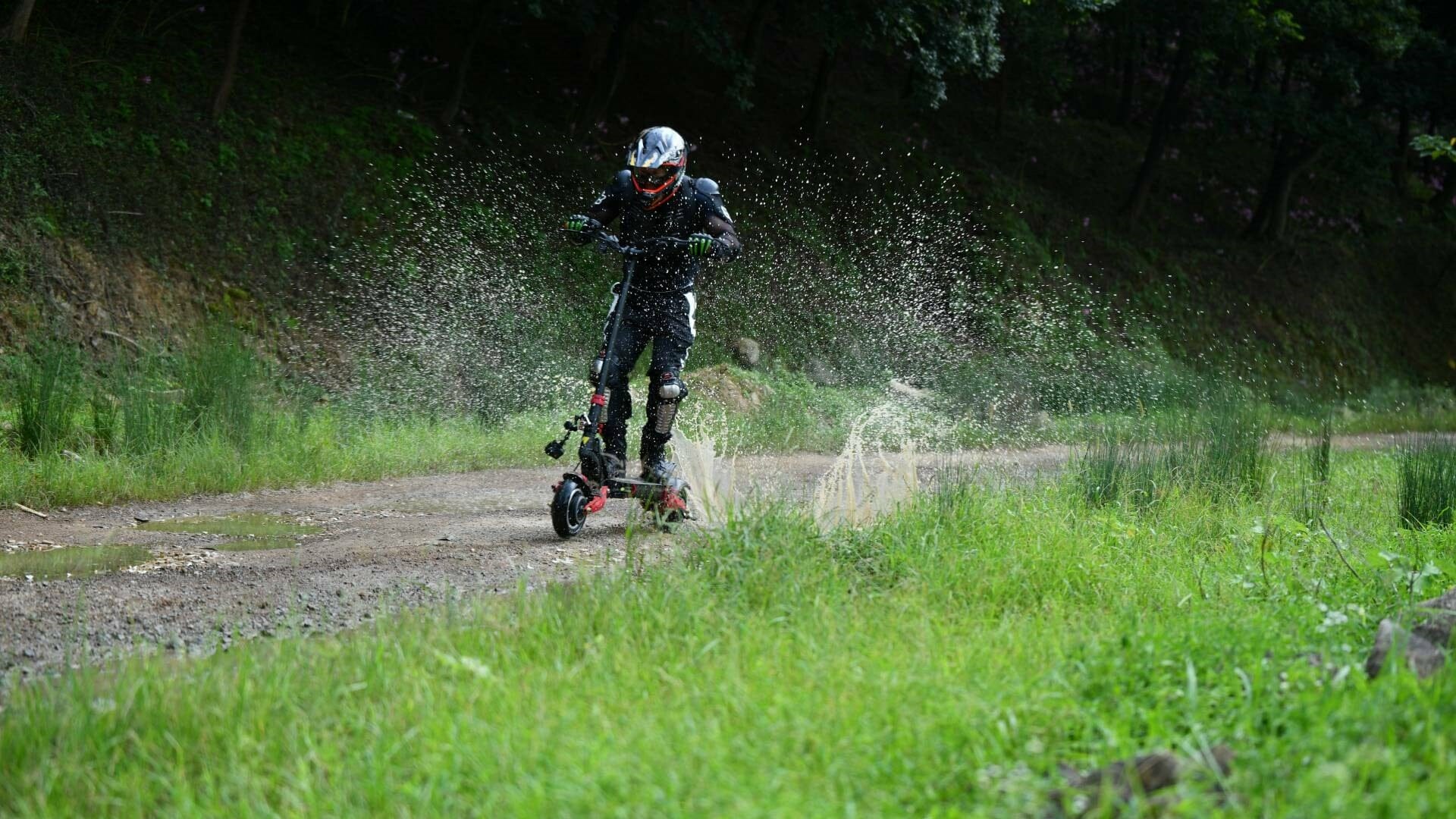

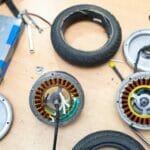

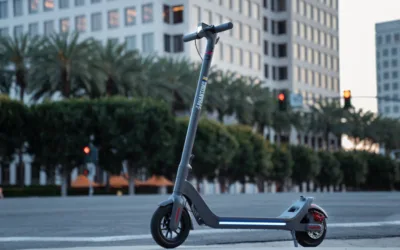
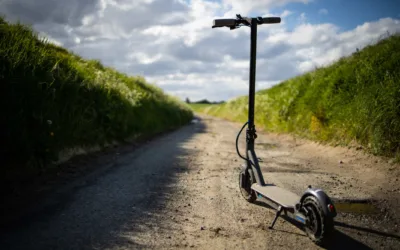

0 Comments